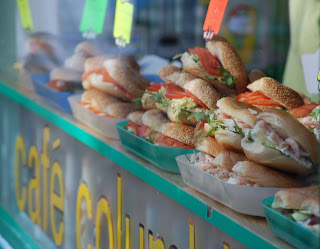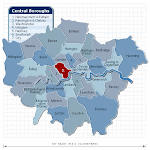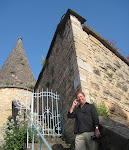

On Sunday, as part of our Photographing East London Markets class we were back out on the streets east of the city of London. Yes, it is a world apart from the leafy Regent’s Park part of town we inhabit. After visiting the Columbia Road Flower Market and another brief return to Brick Lane (in the sunshine this time!) we moved on to our last market. Petticoat Lane Market located on Wentworth and Middlesex Street has been around as an informal market since 1608, and is one of three well known markets east of the City of London (not formally recognized until an Act of Parliament in 1936). A few hundred yards to the north is Old Spitalfields market, and across Commercial Street, to the east, lies Brick Lane Market. A half mile further east is the Columbia Road Flower market.




Huguenots fleeing persecution arrived here in the late 17th century settling mostly in Spitalfields. From the mid-18th century, Petticoat Lane became a centre for manufacturing clothes and The Lane' is renowned for the 'patter' of Cockney rhyming slang and the market traders themselves. The market is open Monday-to-Friday on Wentworth Street alone, but on Sunday extends over many of the surrounding streets, with over 1000 stalls. It closes on Sundays at about 2 pm, and is closed on Saturday.

Petticoat Lane was the least pleasant of the three markets we visited over these past two Sundays. This market really isn’t a tourist attraction. We were warned several times how unsafe the area is! It is not a place I would go back to again. The stall holders really dislike having their picture taken and are quite vocal about it. We met one in the form of a chestnut seller! To be honest I did buy a pashmina but wouldn’t buy any other types of clothing here. Just not me and I was happy to leave.


.




















































